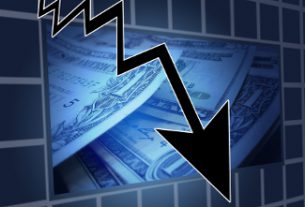For decades many retirement planning guides have talked about the three-legged stool of retirement: Social Security, private savings, and pensions. But the three legs of that stool have become heavily degraded over time. Many Americans ask themselves “What stool?” when it comes to thinking about the three legs of retirement planning.
Social Security is in dire straits and set to run out of money within 15 years. Pensions have largely gone by the wayside and have all but disappeared for most Americans, even those who worked for decades with the promise of a generous pension in retirement. And as we’re all aware, private retirement savings aren’t nearly where they should be for most Americans, hurt by lackluster stock market growth over the past two decades and two major stock market crashes.
That’s why it’s time to jettison the model of the three-legged stool and come up with a new model, one that is more realistic about expectations for retirement and that is more relevant for Americans today. Thinking of retirement funding as a four-legged stool instead offers a firmer and more supportive base for most people. And with a four-legged stool, losing one of the legs isn’t necessarily a deal-breaker. Even better, the four-legged stool is something that any American can achieve.
Income
The smallest leg of the stool is income. And by income we’re not talking about taking distributions from retirement accounts or selling off 4% of your retirement assets each year. Pensions can fall under income, but because you need to remember not to rely on the promise of a pension, that’s not something that should make up a major portion of this income leg.
By income we mean some small stream of income in retirement. It could be a part-time job, working one day a week as a Wal-Mart greeter or as a cashier at the local grocery store. It could be a part-time consulting gig, building off the experience you built up during your career. Or it could be a small home-based business, perhaps even an eBay or Etsy store. Whatever it is, just bringing in a few thousand dollars a year can mean the difference between retiring comfortably and having to make tough decisions about what is essential and what isn’t.
Social Security
Yes, Social Security is on a shaky footing, but that again is why it isn’t a major leg of support for your retirement. When Social Security’s trust fund is exhausted in 2034, Social Security tax receipts are expected to cover at best about 80 percent of expected Social Security payments. With the average Social Security benefit currently averaging $1,461 per month, that means a cut of almost $300 per month, to $1,168 per month.
The uncertainty surrounding Social Security is one of the reasons to bring in more income in retirement. A $12 per hour job as a cashier one day a week is enough to bring in $4,600 a year in pre-tax income, which would make up for any shortfall from Social Security.
Non-Tax-Advantaged Accounts
In addition to having sufficient assets, retirees need to worry about liquidity in retirement. It’s great if you have $1 million saved up in 401(k) and IRA accounts, but that money isn’t always immediately available, and there are tax consequences to selling those assets that can hurt you if you sell too much in any given tax year.
Retirees should have a mix of demand and investment accounts, including checking, savings, money market, and mutual fund accounts. Checking and savings accounts are the most immediately liquid and allow the immediate use of money without tax consequences, while money market, mutual fund, and similar investment accounts are normally less liquid and may result in a taxable event when assets are liquidated.
The benefit of having money in a taxable investment account is the ability to draw on that money unrestricted. Whereas money saved in a 401(k) or IRA account is subject to withdrawal conditions and tax penalties if you try to withdraw it before age 59 ½, and is subject to mandatory distributions once you turn 70, conventional brokerage investment accounts don’t face those same restrictions. You may have to pay capital gains taxes on your earnings, but you have the advantage of having those funds available for sale at any time, and in most cases you can sell assets and have money available within a week.
Tax-Advantaged Retirement Accounts
Finally we come to the main leg of retirement savings: tax-advantaged retirement accounts such as 401(k), IRA, and TSP accounts. These should and do form the bulk of most people’s retirement savings. While investment choices can be limited under some employer-sponsored retirement plans, many plans offer matching contributions, giving employees what is essentially free money and allowing them to make greater investment gains than they would have just from their own savings.
While 401(k) and IRA accounts have numerous restrictions on them and generally can’t be touched until close to retirement (age 59 ½) without being hit with tax penalties, they do benefit from being able to be rolled over. Again, there are numerous rules governing rollovers, but with the help of trusted financial professionals the process can be easy and painless. Best of all, rolling over retirement funds is normally able to be done tax-free.
That means that if you have an old 401(k) account that is underperforming, you can roll it over into a new retirement plan such as a new employer-sponsored 401(k) plan, or into an IRA account. Numerous investors take advantage of rollover provisions to invest their retirement funds into gold, diversifying their portfolio and safeguarding their assets against the risk of inflationary monetary policy and stock market crashes. If you have retirement assets that aren’t working well for you, a rollover may be just what you need.
Planning for retirement isn’t easy, but it doesn’t have to be super difficult either. As long as you exercise discipline, don’t put all your eggs in one basket, and remember the four legs of the retirement stool, you can help ensure that you’ll be able to retire comfortably when the time comes.
This article was originally posted on Goldco.





